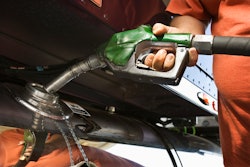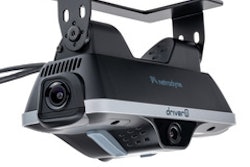
When driving along an open-road interstate in optimal weather with very little traffic and no pedestrians, looking at a cell phone for a handful of seconds, while still illegal, isn’t very dangerous. It’s different when a driver is speeding and tailgating in a high-traffic area. In that scenario, the risk of a collision increases significantly.
It's a combination that could get a driver killed, and that’s what Nauto’s artificial intelligence system monitors to reduce in-cab alerts that could ultimately be an even bigger distraction and risk factor.
In-cab camera video and drop-in driver coaching are seeing wider adoption across the fleet industry, but solutions that take a watchful eye approach at every turn and mile will not go the distance.
Fleets are finding a precision-based AI with a co-pilot model that allows for self-correction to be more effective than a supervisor being able to view drivers via dashcam at any moment and provide real-time feedback. And the demand for higher quality AI is on the rise as its accuracy is critical to avoid alert fatigue and false alerts.
Based on Nauto’s ROI data, drivers welcome predictive warnings but want the opportunity to correct and improve their performance on their own.
“That they don't mind, that's not true. Drivers are very sensitive to [in-cab cameras],” said Nauto CEO Stefan Heck. “You might be picking your nose. In our system, no one will ever know that unless picking your nose causes a collision.”
Nauto’s system records only in the instance of high-risk actions or a collision. It doesn’t allow supervisors to control when recording occurs; the AI tells the system when to record.
That advanced AI not only puts drivers at ease, it also works in communion with drivers to fill the gaps where each performs better than the other.
“The AI looks first and then you can decide whether you want to have video at all or only have collisions or only a very serious event. What we found is because of the power of the AI and the experience of the drivers, we can get to the same collision reduction typically between 60% and 80% whether you capture video or not,” Heck said. “We look for these combinations that get super risky – because often the root cause of collisions is risks they're not aware they're taking – and that results in far fewer alerts.”
Nauto measures how often it alerts each driver, and if it exceeds the design goal, the company automatically makes corrections and adjustments.
Canada-based Equipment Express uses Isaac Instruments to communicate with its drivers, and Compliance and Safety Manager Brian Sillett said his company’s drivers are accustomed to the dense amount of communication to the point where one older driver who was originally opposed to the system eventually realized “he couldn’t live without the technology.”
Sillett said it doesn’t bother drivers if used appropriately.
Brian Turner, director of safety and compliance at Isaac user Carolina FreightWays, said drivers understand that the system provides valuable information for their trip.
To prevent alert oversaturation, the system does allow fleets to send high-priority messages – like changes to load destinations – with sounds and messages they can review at their leisure – like HR emails – with zero sound.
Truck drivers today have more technology in their cabs than ever, from GPS navigation systems to dashcams to electronic logging devices and more, to help them more easily perform their jobs.
Opponents of technology in trucks say the many alerts from these devices can cause driver distraction and fatigue, ultimately rendering the technology not only useless but harmful. But Bruce Stockton, chief operating officer at Wilson Logistics (CCJ Top 250, No. 100), said that’s not the case, and his company wholeheartedly embraces the newest technologies on the market.
“When I started driving a truck … we didn't have any telematics device on a truck that we were receiving messages from home base to tell us where the next load was or where it picked up,” Stockton said. “People talk about technology on a truck and all the distractions; well, I remember driving a truck and having my notepad of my turn-by-turn directions that I had written down from what somebody had told me over the phone, and that alone was a distraction to look down at a piece of paper that I had scribbled down where my next turn was more so than a handheld device or a computer screen on the dash.”
But too many alerts can cause driver disengagement, frustration and even distraction.
Many fleets want to minimize any possible distraction, said Bill Westerman, vice president of product management at telematics provider CalAmp, which offers a platform that pulls data into the cloud and makes it available to managers so they can address problematic driving behavior with drivers directly. Managers can define what alerts they want based on specific activity.
“Like many things in life, there’s a tradeoff between providing that feedback directly to the drivers. On the one hand, it's very useful from the standpoint you're giving the driver direct feedback. They get it in real time so they can adjust their braking, acceleration and what have you,” he said. “There are also some fleets that really try to reduce whatever kind of information is being displayed or sent to the driver because it becomes a distraction. So the positive of giving that kind of reinforcement is offset by the fact that the driver is distracted, and they really need their eyes on the road instead of looking at the tablet.”
At some point, though, those alerts may move beyond a distraction to something drivers simply tune out.
Nauto Chief Product Officer Yoav Banin said this can happen if a system alerts drivers at the wrong time or identifies a false problem, causing driver frustration and reducing the overall effectiveness of in-cabin safety systems.
“Too many false alerts quickly destroy trust; they may simply ignore the alerts at best, and at worst they either disconnect, obstruct the system or even become angry, thereby increasing driver risk,” he said. “If a system can accurately alert in real-time on events and behaviors that are truly risky and can cause collisions, then there won’t be too many alerts. Improving drivers will experience decreasing numbers of alerts if the system performs properly.”
Heck said a number of Nauto’s customers previously used products that didn’t have the same level of AI and switched providers because of alert fatigue. He said companies that bought into dashcam technology four or five years ago were looking for the video function, but because of false alerts, they are now seeking systems with AI.
“A lot of solutions out there have 50% correct alerts and 50% false alerts because if the AI isn't very good, it will mistake a lot of other things. For example, something like smoking is extremely hard to detect and separate from drinking from a straw or holding a pen in your hand,” he said. “Every video player out there will tell you, ‘We have AI, too,’ but you have to ask the next question: what's your accuracy?
“Our bar for product deployment is you should be getting less than one in 20 false alerts, and in many of our algorithms, were 99.6%, 99.7% accurate. So you might get a false alarm once or twice a year, but the rest will all be accurate.”
Nauto’s AI performance builds from more than 2 billion AI-processed driving miles that cover a range of driving factors and edge cases, including drivers wearing sunglasses and masks, rainy and cloudy days, nighttime and other lighting conditions, congested urban roads with pedestrians, bicyclists and motorcyclists, and a full range of vehicle types and usage patterns. The system fuses multiple sensors, including inward and outward video streams, vehicle dynamics and GPS in real-time to constantly assess risk and make intelligent decisions about whether to sound an alert and which alert to sound.
“There are often multiple situations evolving simultaneously; Nauto focuses the driver’s attention on the highest risk event and then guides corrective action with an appropriate prescriptive message and alert tone,” Banin said. “From the moment the technology is deployed, fleets often see an 80-plus% reduction in severe distractions and other risky behaviors within one to two weeks. For a majority of drivers, this happens automatically without manager intervention. Safer driving leads to fewer collisions, reduced injuries and damage and ultimately savings that typically range from 40% to 80%.”
Here are some tips Banin offers to fleets that are considering adopting telematics:
- First and foremost, check the performance and sophistication of the alert system’s AI. Ask about AI precision, inquire about independent lab testing results and investigate the range of risky behaviors detected and under what conditions. If comparing multiple systems, place them side-by-side in the cabin and go for a test drive; take note of how accurately each system triggers alerts and the timeliness of those alerts.
- Choose a vehicle safety system that can identify and take into account driver behavior, external risks and vehicle motion and driver and location history data to assess risk, predict collisions and trigger timely audible alerts; assess the severity level of the event and trigger appropriate alerts; detect collisions and near-collisions with high accuracy; provide precise, prescriptive alerts; foster a driver-friendly approach; and ensure constant driver engagement.
- At the end of day, you should measure risk reduction as indicated by reduced rates of risky behavior and ultimately a reduction in collision frequency and money spent on collision claims and losses.











